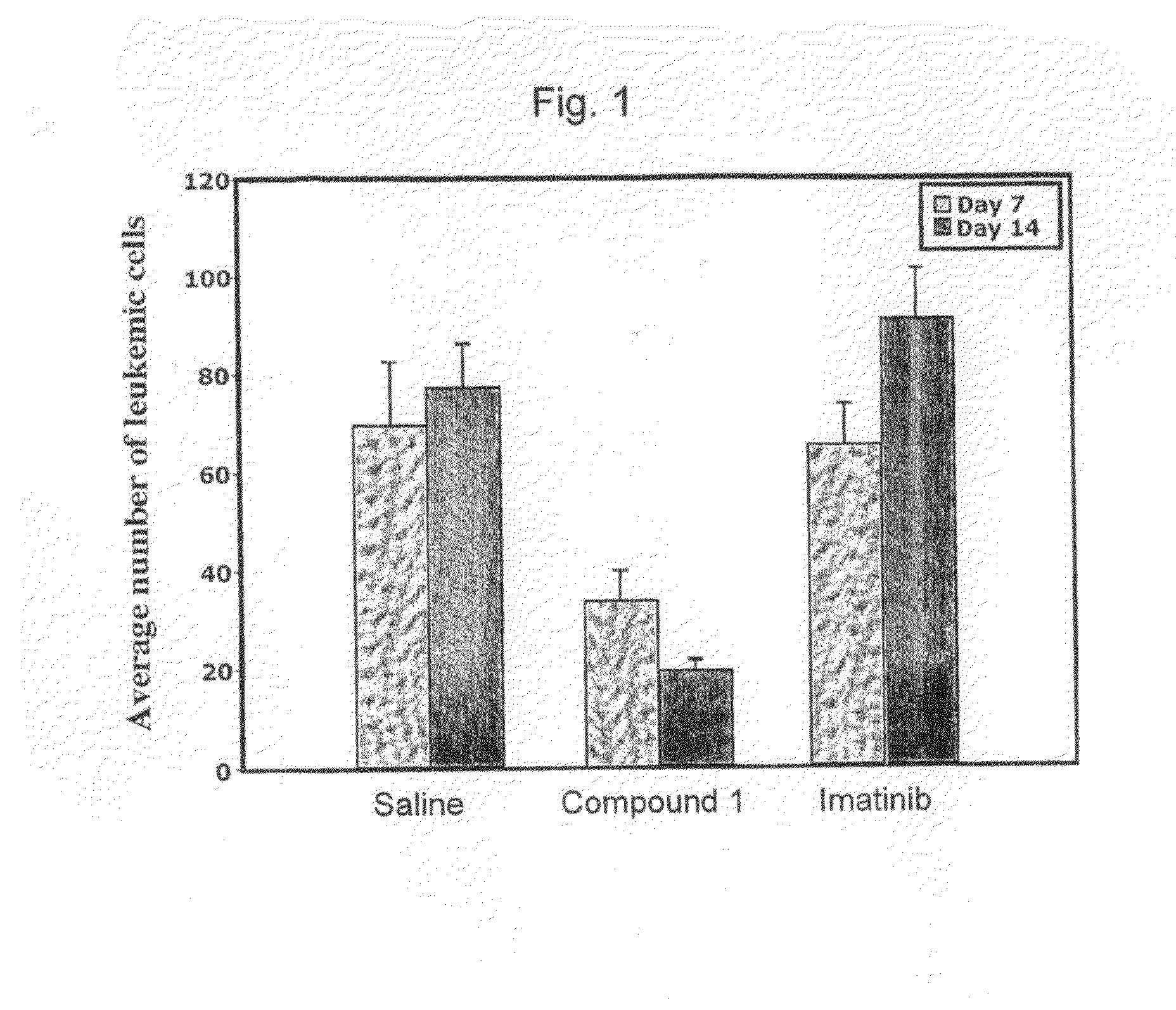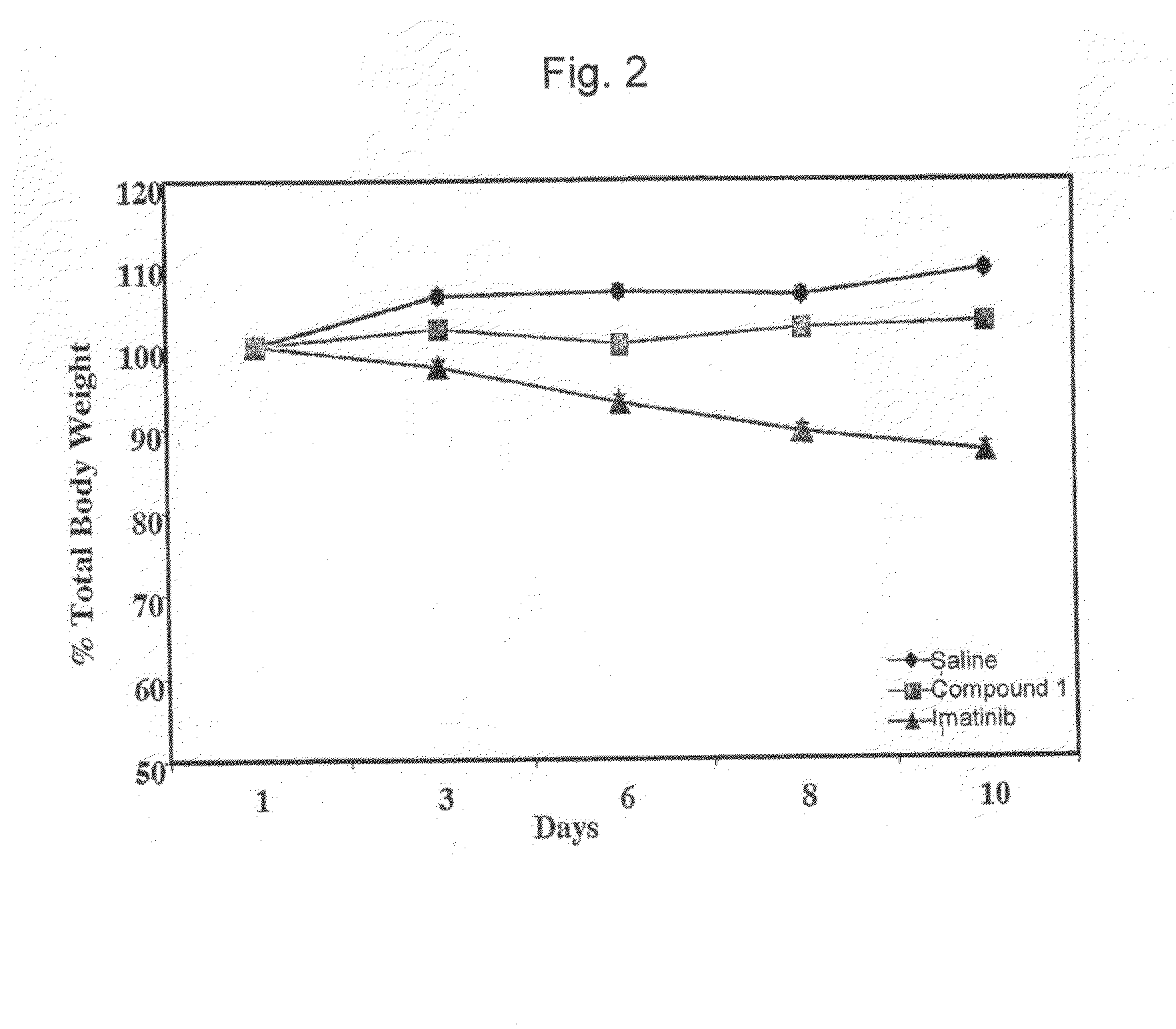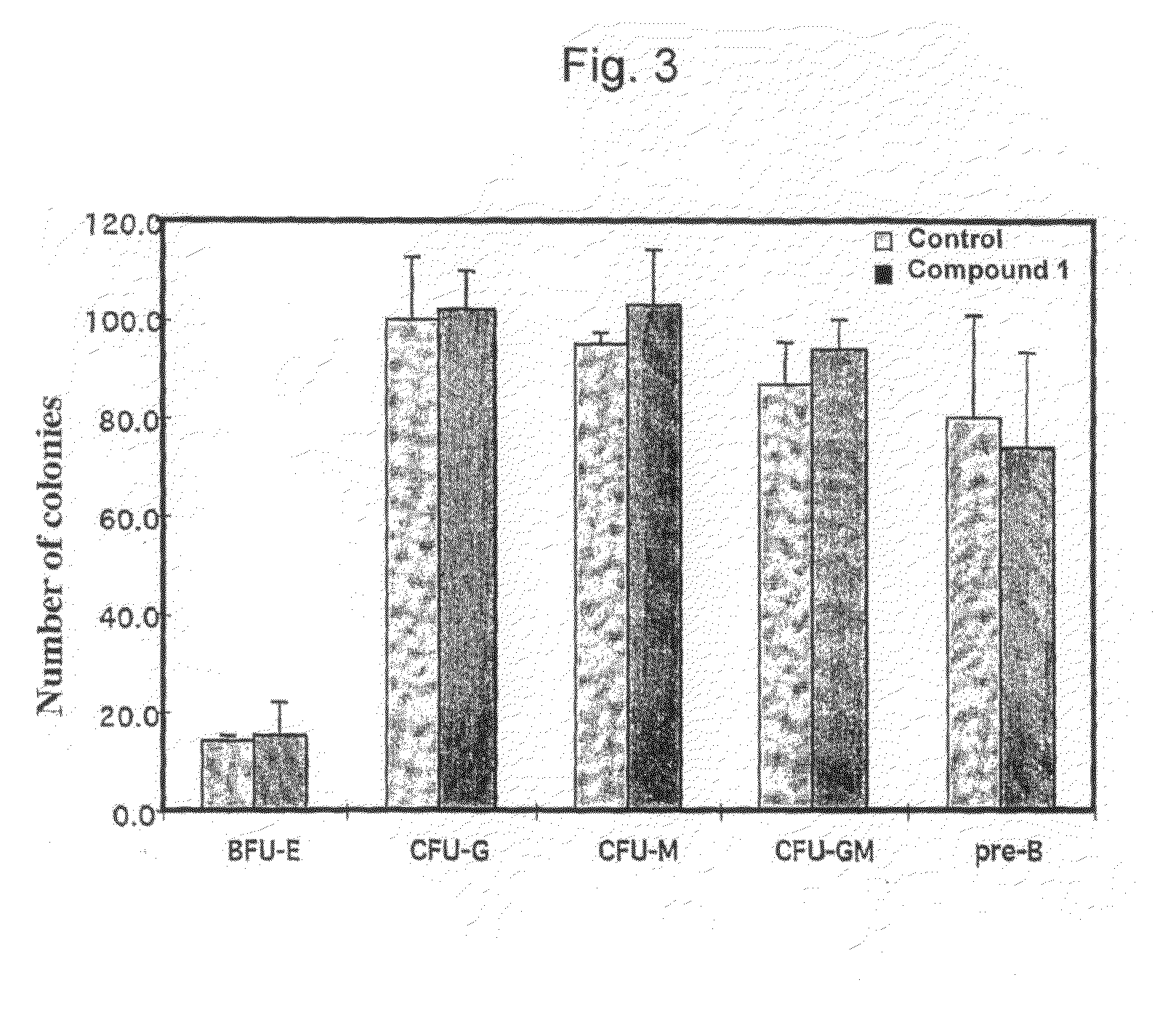Treatment of Drug-Resistant Proliferative Disorders
a proliferative disorder and drug-resistant technology, applied in the field of treatment of proliferative disorders, can solve the problems of affecting the cytotoxic effect of proliferative cells, so as to achieve therapeutically useful and selective cytotoxic effects on proliferative cells
- Summary
- Abstract
- Description
- Claims
- Application Information
AI Technical Summary
Benefits of technology
Problems solved by technology
Method used
Image
Examples
example 1
Effect of (E)-2-(5-((2,4,6-trimethoxystyrylsulfonyl)methyl)-2-methoxy-phenylamino)propanoic acid (Compound 1) on the In Vivo Growth of Cells Expressing the Imatinib Resistant BCR-ABLT315I
[0166]A. 32Dcl3 Cell line
[0167]32Dcl3 Cells (Rovera et al., Oncogene, 1, 29-35 (1987)) were maintained in Iscove's Modified Dulbecco's Medium supplemented with 10% FBS, 1 U / mL penicillin-streptomycin and 10% WEHI-3B conditioned medium as a source of IL-3 (Ymer et al., Nature, 317, 255-258 (1985)).
B. Generation of Wild-Type and Imatinib-Resistant Mutants of BCR-ABL.
[0168]Oligonucleotides corresponding to published bcr-abl mutations (Shah et al., Oncogene 22, 7389-85 (2003)) associated with imatinib resistance were used to introduce these mutations into the full-length bcr-abl cDNA using PCR-based site-directed mutagenesis (Myers et al., PCR Technology, eds. Erlich, H. A., Stockton Press, London (1989)). All constructs were verified by sequence analysis. pcDNA3-based expression plasmids encoding wild...
example 2
Hematopoietic Colony Formation Assay
[0174]To examine the effects of Compound 1 on normal hematopoietic cell population in vivo, a dose of 100 mg / kg of this compound in normal saline (or saline alone as a control) was injected intravenously (tail vein injection) into CD-1 mice (10 animals per group). The effect on the in vitro hematopoietic colony formation of normal bone marrow cells derived from these mice was determined 24 hrs following administration. Bone marrow cells were extracted from the mice after 24 hrs and 2×105 cells were plated on methylcellulose containing appropriate cytokines for lineage specific colony formation. Colonies were counted after 5 to 14 days of incubation. Data for the bone marrow colony formation assay is shown in FIG. 3. No reduction in colony formation of the erythroid, myeloid or lymphoid lineages with administration of Compound 1.
example 3
Activity of Compound 1 Against BCR-ABL Expressing Cell Lines
[0175]A. Cell lines
[0176]K562 cells were maintained in RPMI (Roswell Park Memorial Institute) medium supplemented with 10% FBS and 1 U / ml penicillin-streptomycin.
[0177]32Dcl3 Cells (Rovera et al., Oncogene, 1, 29-35 (1987)) were maintained in Iscove's Modified Dulbecco's Medium supplemented with 10% FBS, 1 U / mL penicillin-streptomycin and 10% WEHI-3B conditioned medium as a source of IL-3 (Ymer et al., Nature, 317, 255-258 (1985)).
B. Cell Viability on Treatment with Imatinib or Compound 1
[0178]K562 cells, and murine 32Dcl3.BCR-ABL cells that ectopically expressed the wild-type p210BCR-ABL oncoprotein, were incubated with varying concentrations of Compound 1 for a period of 72 hours. Cell viability was then determined by trypan blue exclusion. The percent viable cells compared to vehicle-treated controls was determined. In both cell lines, incubation with Compound 1 resulted in a rapid loss of viability with an LD50 of 10-15...
PUM
| Property | Measurement | Unit |
|---|---|---|
| weight percent | aaaaa | aaaaa |
| temperature | aaaaa | aaaaa |
| optical | aaaaa | aaaaa |
Abstract
Description
Claims
Application Information
 Login to View More
Login to View More - R&D
- Intellectual Property
- Life Sciences
- Materials
- Tech Scout
- Unparalleled Data Quality
- Higher Quality Content
- 60% Fewer Hallucinations
Browse by: Latest US Patents, China's latest patents, Technical Efficacy Thesaurus, Application Domain, Technology Topic, Popular Technical Reports.
© 2025 PatSnap. All rights reserved.Legal|Privacy policy|Modern Slavery Act Transparency Statement|Sitemap|About US| Contact US: help@patsnap.com



